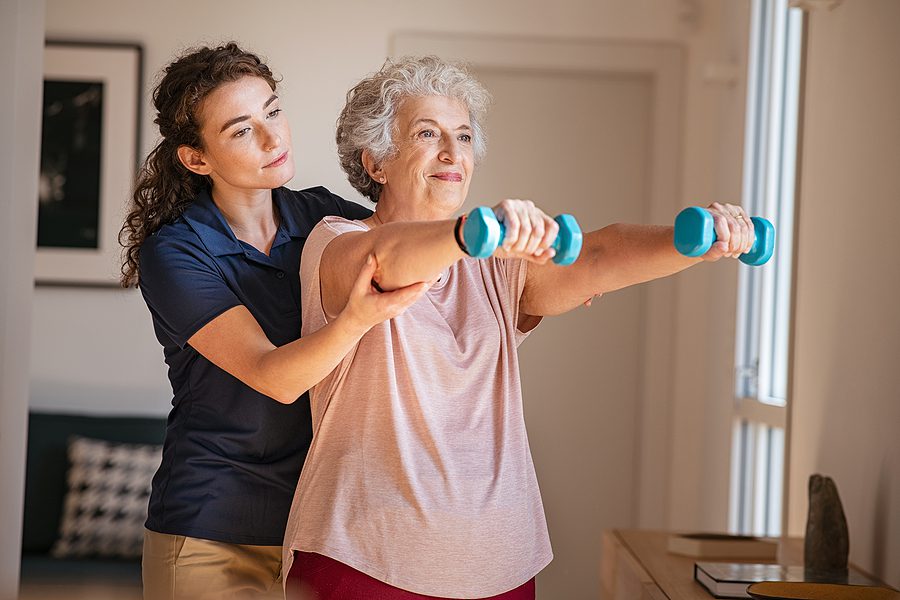Let’s face it. The vast majority of us don’t work out as often as we should. But for senior citizens, a lack of activity can create a lot of added problems. As you age, your muscle mass will decrease. This is especially true when you don’t train those muscles. Having strong muscles as you age can help you feel better, reduce fall risks, and reduce your risk factors for developing chronic illnesses. While grandma doesn’t need to win any arm wrestling contests, a little strength training can help her feel better daily.
Strong Muscles Reduce Fall Risks
Over 1.6 million adults go to the ER each year for injuries related to falls. However, building lean muscle is a good way to prevent this. Working out muscles by exercising can help reduce the risks of falling by increasing stamina, balance, strength, and bone density. Even lifting small weights for a short amount of time daily can lower your fall risk overall.
Exercising Helps Shed Unhealthy Fat
Strong muscles aren’t the only reason for strength training in your twilight years. Exercising helps reduce excess fat and can reduce health risks associated with obesity. Generally, losing weight can reduce the symptoms of chronic back pain, diabetes, high blood pressure, and more.
Strong Muscles Improve Mobility
Most elderly individuals move around using a cane, walker, or wheelchair. While exercising likely won’t return them to walking without an assistive device, it can help reduce their reliance on them. And, in some cases, exercise can help reduce the risk of needing further assistive devices in the future.
Strength Training and Osteoporosis
Osteoporosis is a degenerative condition where one’s bones become weaker and more brittle. Because strength training helps rebuild bone density, working out can help stave off osteoporosis. If your loved one is already living with this condition, light exercise could help slow the degeneration of their bones, overall.
Arthritis Prevention and Working Towards Strong Muscles
Arthritis is the inflammation of joints, causing stiffness and pain. While there are different types of arthritis, most of them lead to eventual joint damage and weakening. Improving overall strength and properly exercising without excessive strain can help limit the development of arthritis. Unfortunately, it can be increasingly difficult to exercise safely as arthritis develops further.
Talking With Your Loved One’s Care Physician About Exercising
Communicating with your loved one’s doctor is important when making major life changes, including light exercise. They may be able to recommend exercise plans, or types of exercises to avoid. Based on your loved one’s medical history and medications, they may advise against certain actions. Always listen to the recommendations and restrictions of your physician when inquiring about changes to diet or exercise.
Additional Help in the Home
At any age, additional supervision during exercise can be a good safety precaution. While you may not have the ability to be there all the time for your loved one, hiring a certified home health aide (CHHA) could be a good solution. A CHHA is trained to provide companionship, assist in physical therapy, provide medication reminders, and more. And, because diet and exercise go hand in hand, CHHA’s also provide nutritious and healthy meal preparation. SafeHarbor Home Healthcare Services have been providing CHHA’s to the Staten Island community for over 50 years.
Safe Harbor Healthcare Services does not provide medical, healthcare, or financial advice via articles. This material has been prepared for informational purposes only. It is not intended to provide, and should not be relied on for medical advice.
Safe Harbor Healthcare Services has been providing excellent home care on Staten Island since 1967. Our services help the elderly and disabled live safely and independently; while giving their families the peace of mind they need. For more information contact us by clicking here, or call (718)-979-6900.

